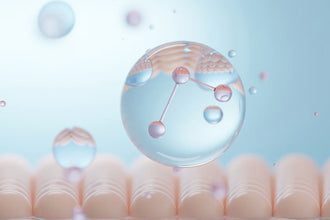
Mechanical Damping with Silicone Scar Tape: Reducing Tension to Improve Scar Appearance
Introduction
In the realm of dermatology, managing scar appearance is a significant concern for both patients and practitioners. Silicone scar tape, a non-invasive treatment, has gained prominence for its ability to enhance scar healing and aesthetics.
This article explores the concept of mechanical damping provided by silicone scar tape, elucidating how reducing tension across the scar site can lead to marked improvements in scar appearance.
Understanding the Mechanics of Scar Formation
Scar formation is an intricate process initiated by skin injury, leading to a cascade of healing events. These events involve inflammation, tissue proliferation, and remodeling, with the final appearance of the scar heavily influenced by mechanical forces acting on the wound.

Excessive tension along the healing site can disrupt the delicate balance of collagen synthesis and degradation, potentially resulting in hypertrophic scars or keloids.
The Role of Mechanical Forces in Scar Development
Mechanical forces, including skin tension and external pressures, play a crucial role in determining the characteristics of scar tissue. Key insights into this process include:
- Tension Induction: High tension levels can stimulate fibroblast proliferation and excessive collagen deposition, leading to raised, prominent scars.
- Alignment of Collagen Fibers: The direction and amount of tension influence the alignment of collagen fibers, affecting the scar's texture and elasticity.
| Factor | Description | Impact on Scar Formation |
|---|---|---|
| Skin Tension | The natural tension exerted by the skin around the wound. | High tension can lead to thicker, more prominent scars by stimulating excessive collagen production. |
| External Pressures | Pressure applied from external sources, such as clothing or bandages. | Properly applied pressure can reduce scar thickness by minimizing fibroblast activity and collagen deposition. |
How Silicone Scar Tape Offers Mechanical Damping
Silicone scar tape provides a unique mechanism of action, termed mechanical damping, to mitigate the adverse effects of tension on scar formation:
-
Tension Reduction: By covering the scar with a flexible, yet supportive silicone layer, the tape distributes mechanical stresses more evenly across the tissue. This reduces the peak tension experienced by the newly forming scar, facilitating a more balanced healing environment.
-
Protective Barrier: The tape acts as a physical shield, protecting the scar from external irritants and further mechanical insult. This barrier function is critical during the early stages of healing, when the scar is most vulnerable to environmental factors.
-
Optimal Microenvironment Creation: Beyond mechanical damping, silicone scar tape maintains a hydrated and temperature-controlled microenvironment at the scar site. These conditions are conducive to balanced collagen synthesis and scar maturation, indirectly supporting the mechanical damping effect.

Clinical Evidence and Mechanisms
The efficacy of silicone scar tape in improving scar appearance through mechanical damping is supported by clinical research. Studies highlight several mechanisms by which mechanical damping contributes to scar optimization. Key findings include:
- Modulation of Fibroblast Activity: By reducing mechanical stress, silicone tape minimizes fibroblast overactivity, thereby preventing excessive collagen buildup.
- Enhanced Scar Maturation: The evenly distributed tension supports the natural alignment and maturation of collagen fibers, leading to softer, flatter scars.
- Prevention of Abnormal Scar Formation: Regular use of silicone tape from the early stages of healing can significantly reduce the risk of hypertrophic scars and keloids, particularly in high-tension areas such as joints.
Practical Considerations for Using Silicone Scar Tape
Incorporating silicone scar tape into scar management protocols involves consideration of several practical aspects:
- Application Timing: For best results, silicone scar tape should be applied after the wound has fully closed and should be worn consistently for several months, depending on the scar's characteristics and healing progress.
- Skin Compatibility: Silicone is generally well-tolerated, making the tape suitable for long-term use across diverse skin types.
- Lifestyle Integration: The discreet and flexible nature of silicone scar tape allows for easy integration into daily routines, without interrupting physical activities or personal care practices.

Conclusion
Mechanical damping with silicone scar tape offers a promising approach to improving scar appearance by effectively reducing tension at the healing site. This innovative mechanism supports balanced collagen synthesis, protects against external insults, and facilitates the development of aesthetically favorable scars.
As part of a comprehensive scar management strategy, silicone scar tape stands out for its simplicity, efficacy, and potential to significantly enhance patient outcomes in scar treatment.
References:
https://www.ncbi.nlm.nih.gov/pmc/articles/PMC2903966/
https://www.ncbi.nlm.nih.gov/pmc/articles/PMC4049052/
https://www.ncbi.nlm.nih.gov/pmc/articles/PMC5015816/
General Disclaimer: All information here is for educational purposes only and is not meant to cure, heal, diagnose nor treat. This information must not be used as a replacement for medical advice, nor can the writer take any responsibility for anyone using the information instead of consulting a healthcare professional. All serious disease needs a physician.














